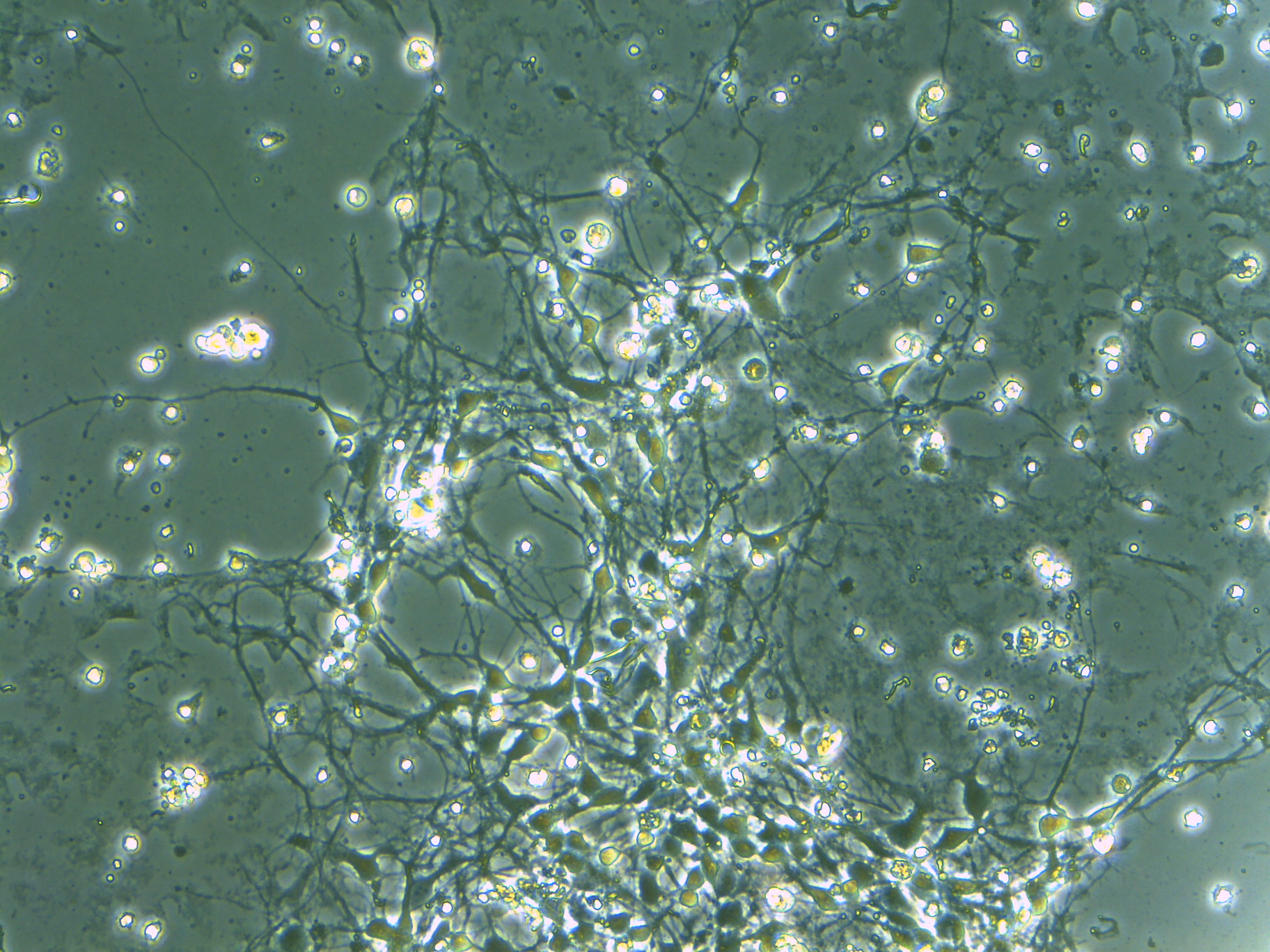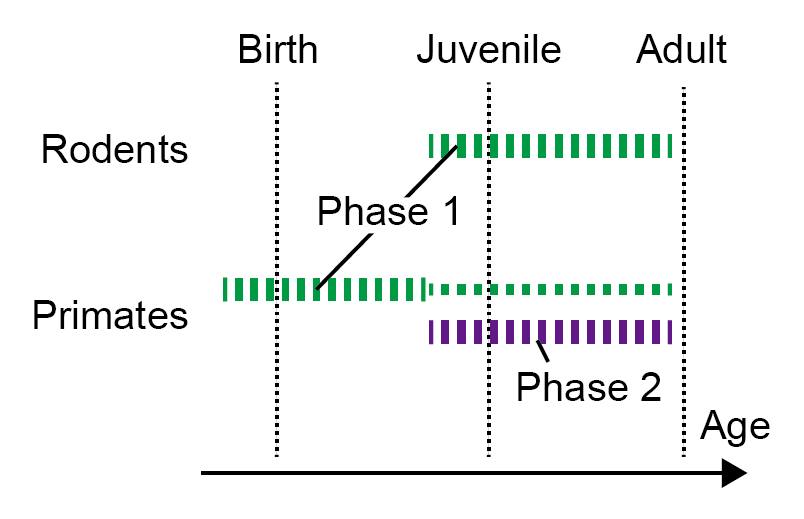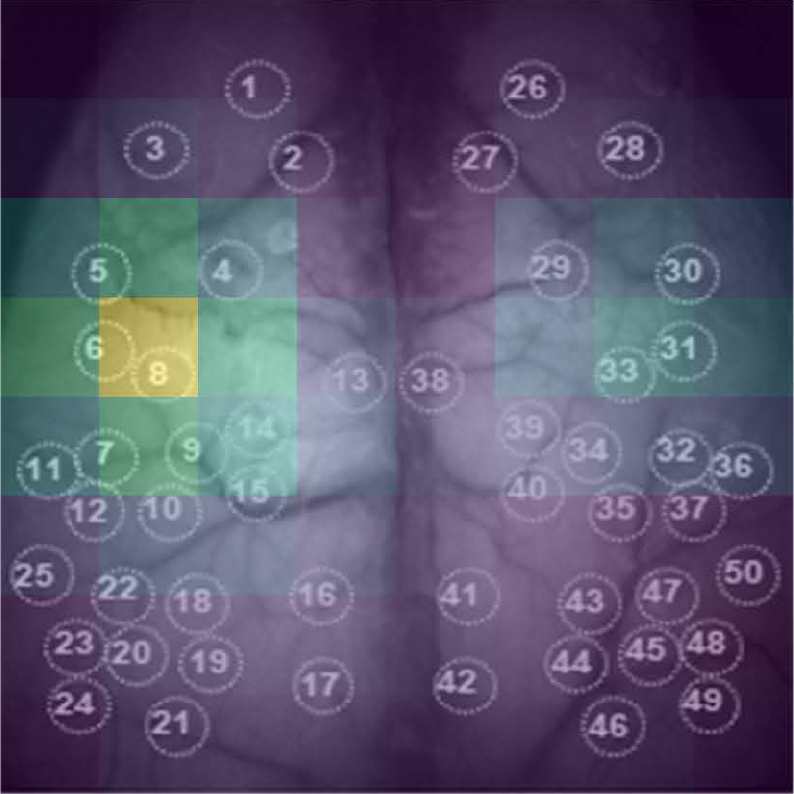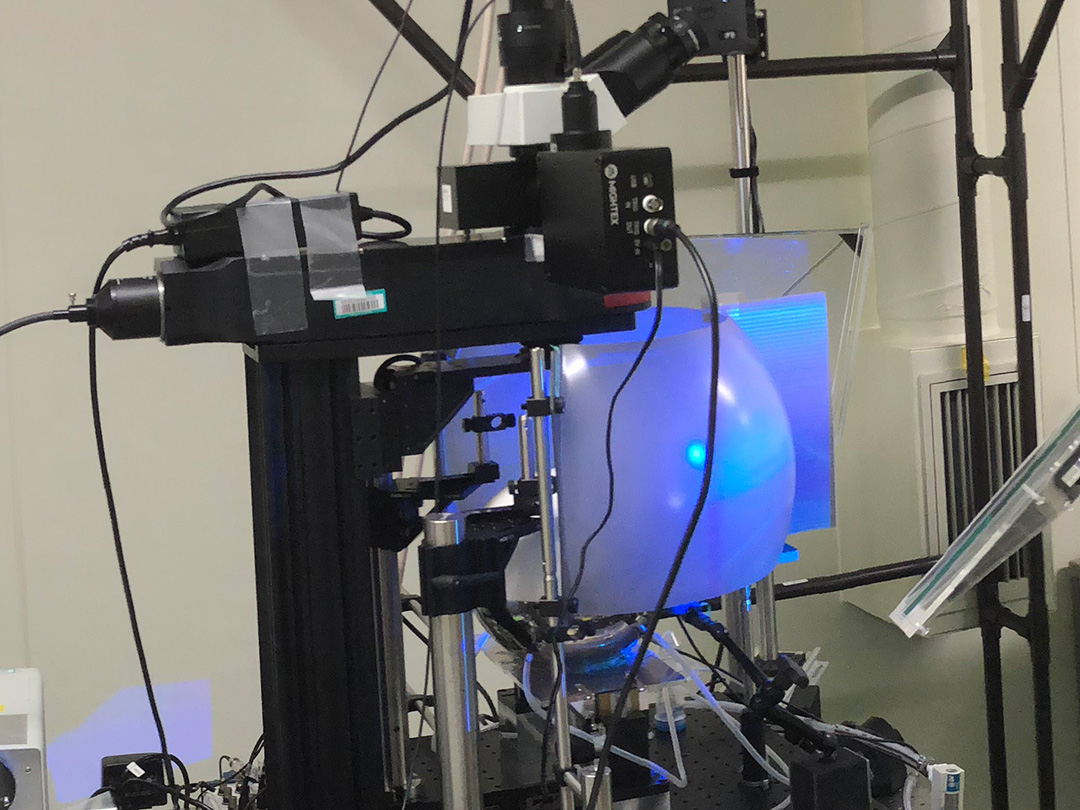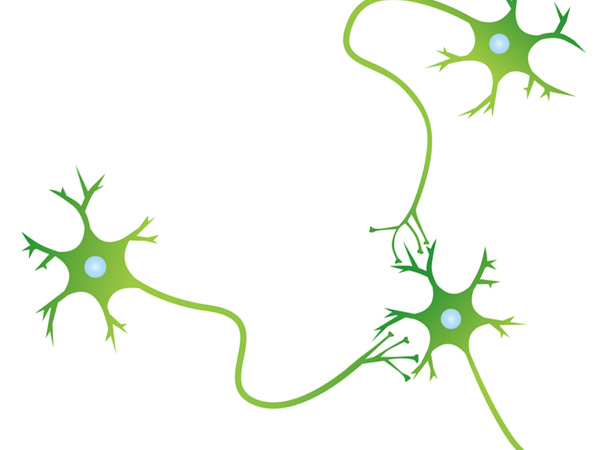A protein that appears in postsynaptic protein agglomerations has been found to be crucial to their formation. The Kobe University discovery identifies a new key player for synaptic function and sheds first light on its hitherto uncharacterized cellular role and evolution.
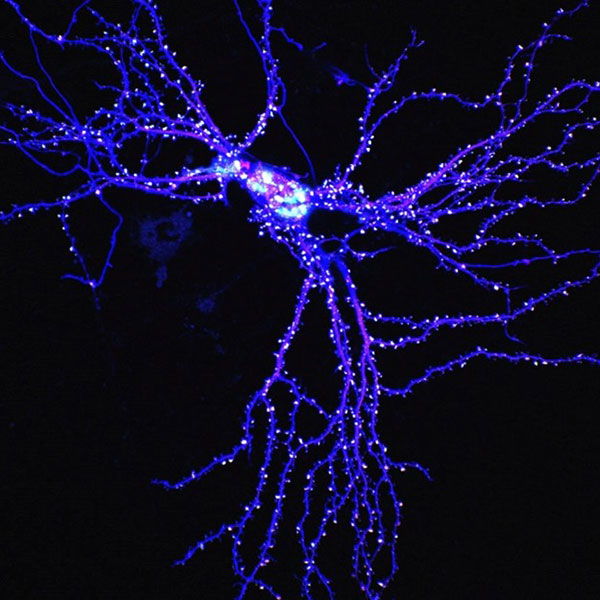
A Kobe University research team identified a protein, called “FAM81A,” that has been showing up in the majority of studies on the “postsynaptic density” but has remained uncharacterized so far. In a series of analyses, they now found that the protein probably is a major regulatory factor. The picture shows a cultured mouse hippocampal neuron. The small white dots are postsynaptic densities containing labelled FAM81A. © KAIZUKA Takeshi (CC BY)
What happens at the synapse, the connection between two neurons, is a key factor in brain function. The transmission of the signal from the presynaptic to the postsynaptic neuron is mediated by proteins and their imbalance can lead to neuropsychiatric conditions such as severe depression, autism, or alcohol dependence. However, due to the vast diversity of proteins present at this junction, many have not yet been studied and often it is not even clear whether those previously found actually belong there or whether they are just impurities resulting from the analysis process. A particularly conspicuous structure directly underneath the postsynaptic membrane is the so-called “postsynaptic density,” an agglomeration of possibly thousands of different proteins.
To shed some light on the postsynaptic density, Kobe University neurophysiologist TAKUMI Toru and his group first compared 35 datasets of previous studies on the phenomenon to find out which uncharacterized proteins appear consistently. KAIZUKA Takeshi, the first author of the paper, explains, “We established an analytical pipeline to unify and align protein structures in different datasets. This resulted in the identification of a poorly characterized synaptic protein that has been detected in more than 20 of these datasets.” This suggested that the protein, which goes by the label FAM81A, is probably relevant to the function of the whole structure, so the team analyzed its interactions with other proteins, its distribution in and around neurons and its effect on neuron shape and function, the mechanism of its function, and its evolution. In short, they gave this protein a full first characterization.
Takumi summarizes their results, now published in the journal PLoS Biology, “The important finding is that FAM81A interacts with at least three major postsynaptic proteins and modulates their condensation. This suggests that FAM81A is a major regulatory factor in the postsynaptic density.” The group could confirm that FAM81A facilitates the condensation of key proteins into a membrane-less organelle through liquid-liquid phase separation, a process in which strongly interacting molecules exclude elements of the surrounding medium, and that the absence of the protein leads to a significant decrease of activity in cultured neurons.
Humans have two related copies of the gene, FAM81A and FAM81B. However, while FAM81A is expressed in the brain, FAM81B is expressed only in the testes. Furthermore, birds and reptiles also have two copies of the gene, but amphibians, fish and invertebrates have only one, and its expression is not localized to one tissue. “Interestingly, it seems that the evolutionary conservation of FAM81A function in the synapse is limited compared to other synaptic molecules, as the FAM81A homolog in fish is not detected in the synapse. This suggests that FAM81A could be a key protein in understanding the cognitive functions of higher vertebrate brains,” says Kaizuka.
But their work was only the first step. To really understand the role of the protein, it is necessary to study its function in the complex environment of the brain. The Kobe University research team thus wants to create mouse models that lack the gene for FAM81A and study what this means both for the function of the synapses and the behavior of the organism.
Acknowledgements
This research was supported by the Japan Society for the Promotion of Science (grant JP16H06463, JP18K14830, JP22H04981, JP23H04233), the Japan Science and Technology Agency (JPMJMS2299), and the Takeda Science Foundation. It was conducted in collaboration with researchers from the University of Edinburgh, Kyoto University and the University of Sheffield.
Original publication
T. Kaizuka et al.: FAM81A is a postsynaptic protein that regulates the condensation of postsynaptic proteins via liquid-liquid phase separation. PLoS Biology (2024). DOI: 10.1371/journal.pbio.3002006
Release on EurekAlert!
Often seen, never studied: First characterization of a key postsynaptic protein







